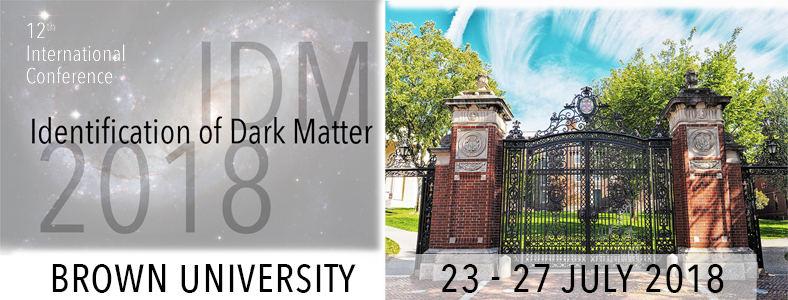Conveners
5.4 Indirect Detection
- Jan Conrad (Stockholm University)
- Jan Conrad (Stokcholm University)
- Jan Conrad (Stockholm University)
The GAPS Antarctic balloon payload is the first experiment optimized specifically for low-energy antideuteron and antiproton cosmic-ray signatures. Low-energy antideuterons have been recognized as an extraordinarily low-background signature of new physics, and low-energy antiprotons are probes of both light dark matter and cosmic-ray propagation models. Together, these signatures open new...
Dwarf spheroidal galaxies (dSphs) are considered promising targets for indirect Dark Matter (DM) identification. The (mostly frequentist) analyses of gamma-ray photons originating from dSphs have allowed to set stringent limits on the DM self-annihilation cross-section. Conventional search strategies rely on quantifying the abundance of DM by calculating the so-called J-factor. This quantity...
Milky Way satellite galaxies are compelling targets for dark matter searches due to their proximity, high dark matter content, and low astrophysical backgrounds. Detailed studies of the stellar kinematics of satellite galaxies provide information on their dark matter content and velocity distribution. In this talk, I will discuss the systematic uncertainties in determining the dark matter...
The Galactic Center GeV excess is firmly detected. While there is statistical evidence suggesting the excess originates largely from point sources, its interpretation as a signal of annihilating dark matter has not been conclusively ruled out. I will discuss the degree to which assumptions about the diffuse modeling and source populations could affect non-Poissonian template fitting methods...
Indirect detection of dark matter through multiwavelength astronomical observations provides a promising avenue for understanding the particle nature of dark matter. In the case of dark matter consisting of weakly-interacting massive particles (WIMPs), self-annihilation ultimately produces a variety of observable products including gamma-rays that can be detected directly, as well as...
Deep, all-sky gamma-ray observations combined with recent discoveries of nearby dwarf galaxies have set the stage for the potential detection of dark matter annihilation. I will discuss a few issues, both conceptual and technical, required to rigorously establish the existence of a signal and to identify it as new physics. This includes assessing significance given limitations in our...
